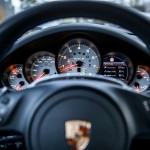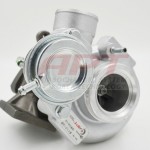Known as forced induction systems, both turbochargers and superchargers are designed to compress air flowing into your engine. The power that your car makes depends on the amount of air flowing into your engine. Forced induction happens to be one of the fastest ways to add significant power to an engine, through the methods of either supercharging or turbocharging.
While a turbocharger runs off waste energy created by the engine, a supercharger on the other hand requires engine power to run. So what are the pros and cons between the two systems?

Turbochargers
Pros:
– Provides significant horsepower gains.
– Higher fuel efficiency; turbochargers use of exhaust gases that otherwise is ejected into the atmosphere and is wasted.
– More power relative to size is produced, allowing smaller engines to match larger engines in performance.
– Smaller engines use less fuel while idling as it isn’t directly connected to the engine and therefore isn’t continuously placing additional workload on it.
Cons:
– Smaller boost threshold as compared to superchargers. They therefore work most effectively only in a small range of RPM speeds.
– Takes time to spool up and provide useful boost, resulting in boost lag.
– Requires more engine oil lubrication as high temperatures causes lubricants to evaporate quickly.
– Power tends to surge in when optimum RPM speeds are achieved, resulting in reduced control and stability in the vehicle.
Image: CZmarlin — Christopher Ziemnowicz
Supercharger
Pros:
– Lower RPM required for boost; not reliant on high RPM for power boost benefits to kick in.
– Provides significant power boosts quickly and effectively.
– No lag; power delivery is immediate, with gains are directly proportional to speed of engine.
– Cost effective when amount of additional power boosts factored in.
Cons:
– Significantly less efficient than turbochargers; is connected directly to the engine’s crankshaft, resulting in additional fuel use to operate (up to ~20 percent).
– More expensive to install and maintain; engines need to be larger and more durable to handle the explosive boosts that superchargers put them under. The need for heavy-duty parts increases overall price of vehicle.
Have a damaged or poorly tuned turbocharger? Contact APT-Turbo for the best turbocharger repair and testing services in Johor Bahru.






